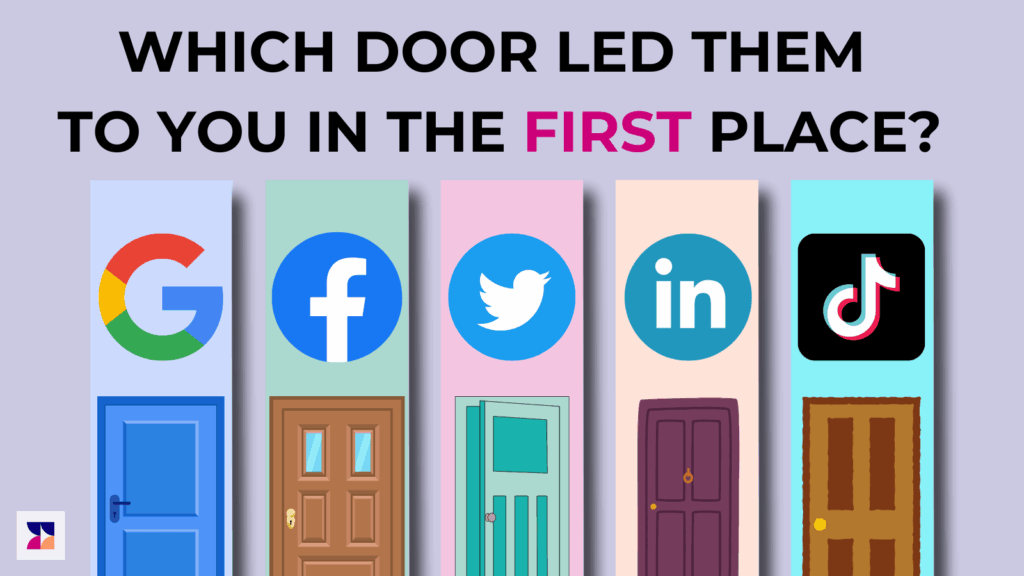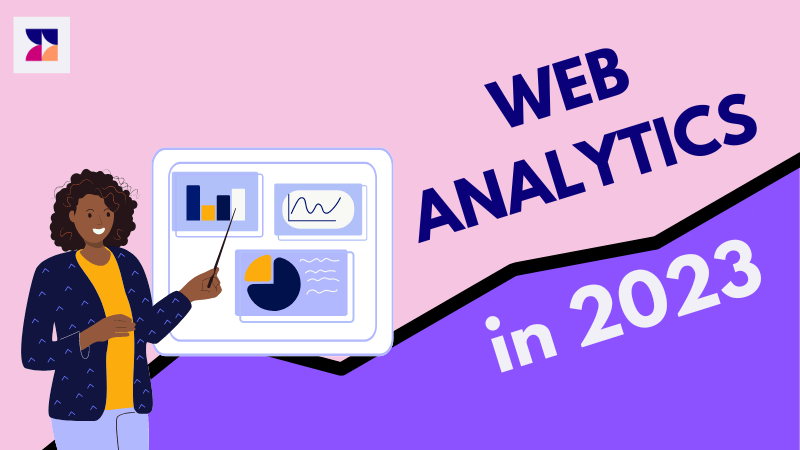Digital marketing is on the cusp of a seismic shift. In 2025, Google will phase out third-party cookies on its Chrome browser. While this isn’t unexpected, it is hugely significant for marketers collecting data, implementing strategies and analysing campaigns.
This change is part of a broader industry trend responding to growing consumer concerns about privacy and data security.
Recent statistics show that the majority of marketers see this shift as a positive development, with 75% already adopting alternative tracking methods. Nonetheless, there is still considerable uncertainty about how to navigate this uncharted, cookie-free land.
In this article, we explore the implications of the third-party cookie phase-out:
- What are third-party cookies, and how do they differ from first-party cookies?
- What is the third-party cookies phase-out and why is it happening?
- How will phasing out third-party cookies impact digital marketing?
- How can marketers adapt to the new, cookie-free world?
- What can we expect from the future privacy-centric, cookieless landscape?
We’ll guide you through the new era of digital marketing, where privacy and data accuracy go hand in hand.
Understanding third-party cookies
Let’s begin with the basics. What exactly are third-party cookies?
Simply put, third-party cookies are a type of HTTP cookie — small blocks of data created by a web server while a user is browsing a website.
This differs from first-party cookies:
- First-party cookies are set by the domain the user is visiting. Their function is to enhance the user experience by remembering login details or personalising content based on previous visits. They are generally considered less intrusive as they do not track user behaviour beyond the initial site.
- Third-party cookies are set by a different domain to that which the user is actively visiting. This often occurs when a website contains elements like third-party images, ads or embedded videos from other sources, such as YouTube. Their function is to gather data across various websites, tracking user activity and potentially personal information.
Third-party cookies are used for a range of marketing activities:
- Cross-site tracking
- Retargeting
- Ad serving
- Personalisation
- Campaign analytics and measurement
Here’s an example of how they might work in action.
Let’s say you’re reading a blog, and within it is embedded a cute cat video. Naturally, you watch it. From this, YouTube can set a cookie to track your preferences (i.e. cats) and suggest relevant content (more cats) later down the line. So, it’s no coincidence that after watching all those cat videos, you start seeing cats all over the internet.
Are third-party cookies going away? Understanding the third-party cookies phase-out
So how, and why, are third-party cookies being phased out?
The long and short of it is that the extensive tracking capabilities of third-party cookies pose considerable privacy risks. Ad networks using these cookies can collect sensitive data, including medical history, sexual orientation and political affiliations, potentially linking this information to the user’s real identity.
Such intrusive data collection has sparked consumer concern and a growing demand for privacy, with younger generations leading the charge. According to a 2023 Cisco study, 42% of consumers aged 18-24 have exercised their data subject access rights, compared to just 6% of those aged 75 and older.
This surge in privacy awareness has prompted legislative action worldwide. Regulations like GDPR and CCPA aim to curb the risks associated with cookies and enhance data protection:
- GDPR considers cookies a form of personal data, imposing stringent consent requirements on them (as you might have noticed every time you visit a website).
- CCPA mandates transparency about the types of cookies used, the data collected and the purpose of data collection.
In response to evolving regulations and consumer concerns, the third-party cookies phase-out represents a step towards a more privacy-focused digital landscape. The question for marketers, then, is how to ensure strategies remain effective and numbers accurate while not impeding customer privacy.

When will Google phase out third-party cookies? Timeline and current status
Initially announced in January 2020, Google originally aimed to eliminate third-party cookies by 202 2. However, that deadline has clearly come and gone.
Google’s third-party cookies phase-out timeline has seen several extensions, with the most recent update pushing full deprecation to the beginning of 2025:
- January 2020: Google announced its plan for Chrome’s third-party cookies phase-out by 2022.
- 2022: Initial deadline for the third-party cookies phase-out is set but later postponed.
- First Quarter 2024: Google’s third-party cookies phase-out begins for 1% of Chrome users.
- February 2024: UK Competition and Markets Authority (CMA) orders Google to pause the phase-out until anti-competitive concerns with the Privacy Sandbox are addressed.
- April 2024: Full third-party cookies phase-out delayed to the beginning of 2025 due to industry and regulatory feedback.
- 2025: Google aims to extend third-party cookie
Impact of the third-party cookie phase-out on marketers and advertisers
Phasing out third-party cookies will have significant implications for marketers and advertisers, especially for data collection, audience targeting and ad performance measurement. Let’s take a look at what will happen to each.
Data collection and user tracking
Third-party cookies have been a cornerstone for tracking user activity, enabling marketers to gather insights into user preferences and behaviours. With the phase-out of third-party cookies, understanding consumer behaviour across different websites will become more challenging.
Changes in audience targeting and personalisation
Without third-party data, marketers will need to explore alternative targeting and personalisation methods to know the most relevant customers to target with ads.
Impact on ad performance measurement
The deprecation of third-party cookies will also transform how advertisers measure and attribute the success of their campaigns. Techniques such as view-through tracking, which depend on cookies to monitor ad views and subsequent actions, will no longer be feasible.
Marketers will need to adopt new measurement tools and methodologies to accurately assess the impact of their advertising efforts.
Adapting to the cookieless future: what will replace third-party cookies?
The idea of having no audience data to track, target, personalise and measure campaigns is enough to keep any marketer up at night. Luckily, we aren’t about to enter a Dark Age of audience metrics.
The end of third-party cookies is prompting a speedy shift towards innovative alternatives that prioritise user privacy while maintaining effective audience insights. As it turns out, marketers might not need cookies at all.
Let’s take a look at some of the top alternatives to third-party cookies for marketers.
First-party data
Remember first-party data from the start of the article? While third-party cookies are being phased out, their less controversial cousin, first-party data, remains alive and kicking.
First-party data — i.e. that which is obtained directly with user consent — is one of the most promising strategies for collecting user data in an ethical digital age. First-party data is accurate and builds a foundation for personalised marketing strategies that resonate deeply with audiences.
Contextual advertising
Contextual advertising is another pivotal strategy gaining traction. It involves targeting advertisements based on content users actively engage with — which is far less invasive than tracking individual behaviours. Following this method, brands can deliver relevant messages without compromising user privacy.
One way contextual advertising is achieved is through the Federated Learning of Cohorts (FLoC). This open-source technology works by grouping users based on shared interests inferred from their browsing history, preserving anonymity while enabling effective ad placements.
Interest-based advertising
Interest-based advertising through advancements like Google’s Topics API offers a refined approach to personalisation. By categorising users based on recent activities rather than persistent cookies, advertisers can deliver tailored experiences that respect user privacy.
Server-side tracking
Server-side tracking is another progressive approach to data collection in digital marketing. Unlike the old-school client-side methods that depend on users’ browsers, server-side tracking gathers and processes data on dedicated servers.
Why is this a game-changer? For starters, it sidesteps ad blockers and browser privacy settings, delivering richer, more accurate insights for your marketing strategies. By taking control of your data collection, you reduce dependency on third-party tech and boost your data protection efforts.
It’s a win for regulatory compliance and seamlessly integrates with your current analytics and marketing tools.
Privacy-first analytics
Investing in privacy-first analytics solutions, such as Wide Angle Analytics, is essential. Doing so not only ensures regulatory compliance but also unlocks deeper, more accurate insights into audience behaviours, giving you the edge in a post-cookie digital ecosystem.
How to phase out third-party cookies: 3 top tips for marketers
As we’ve seen, there are plenty of options to consider in the move away from third-party cookies. To get you started, here are three top tips to help navigate the transition away from third-party cookies effectively:
1. Make first-party data your top priority
First-party data, collected directly from your audience, is your go-to in the post-cookie era.
By focusing on customer interactions through channels like social media, blogs, your website, chat and email, you can gather accurate insights straight from the horse’s mouth, and without relying on third-party sources.
2. Invest in contextual and interest-based targeting
By aligning ads with content and interests rather than individual user profiles, you can deliver personalised experiences that resonate with your audience — with none of the snooping into their personal information.
3. Collaborative data initiatives with industry partners
Pooling resources through collaborative data initiatives with industry partners can mitigate the impact of losing third-party cookies. This exchange not only enriches your data insights but also fosters community resilience in adapting to new data regulations.
The future of online privacy: 4 key trends
What’s next for the cookie-free digital world? We see four key trends shaping the future of online privacy:
1. Navigating international convergence
Global data privacy regulations are increasingly converging, influenced by frameworks like GDPR.
That being said, divergence still exists, particularly in jurisdictions like the US where state-level regulations hold sovereignty.
Future legislation will need to bridge these gaps, promoting international harmony in data governance.
2. Technological innovation will only continue
AI, machine learning, and IoT are revolutionising data collection, but they also bring new privacy challenges. Regulations must evolve to ensure consent, transparency and ethical data use in this tech-driven era.
3. Heightened consumer awareness
With consumers increasingly aware and vocal about their privacy rights, governments are stepping up with stricter laws. Expect expanded consumer rights and better consent mechanisms driven by this advocacy.
4. The role of data governance in business
For businesses, adapting to changes in online privacy requires ongoing investment in robust data governance frameworks and compliance measures to navigate stricter enforcement and penalties. This also necessitates being adaptable and reactive to the ever-changing digital privacy landscape.

Looking ahead, the evolution of data privacy laws will continue to influence digital marketing strategies, urging marketers and businesses to adopt ethical data practices.
As pioneers in data privacy solutions, Wide Angle Analytics is a Google Analytics alternative empowering marketing agencies and departments with accurate insights to maintain clarity over customer behaviour while navigating regulatory complexities. By prioritising privacy-centric analytics and compliance, Wide Angle Analytics supports businesses in maintaining consumer trust while optimising marketing efforts in an ever-changing digital landscape.
Get ready for the cookieless future and explore Wide Angle Analytics.
FAQs
Has Google delayed cookie phase-out until 2025?
Yes, in April 2024, Google’s third-party cookies phase-out was delayed until 2025.
That being said, Google hasn’t given a specific timeline, so the 2025 date remains speculative.
Lauren Meredith is a seasoned content marketing strategist and writer helping online businesses connect with their audience and maximise organic success. Her SEO content secures #1 positions on Google, features in publications such as The Independent, Yahoo and academic domains, and has won an award at the Digital Growth Awards.



